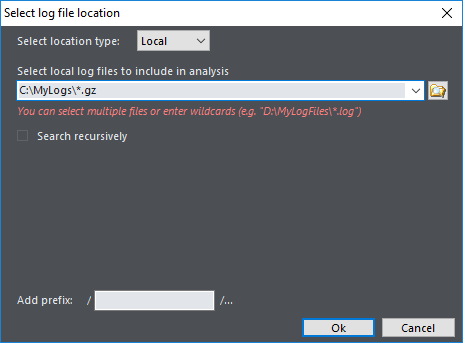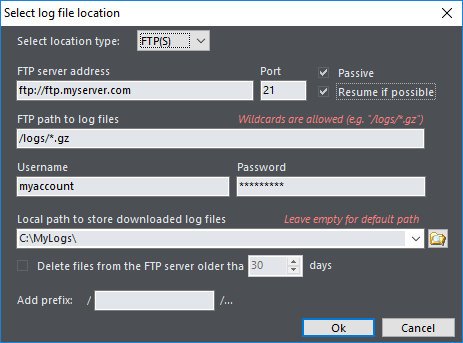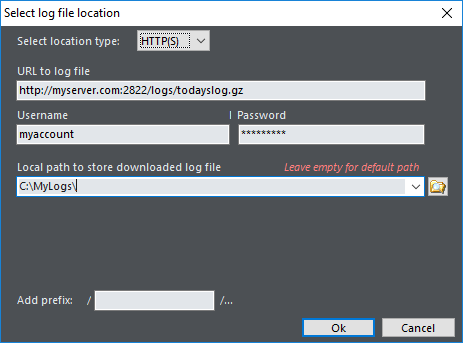|
Log File Location |
|
Log File Location |
In this dialog you can define location of raw log files. Web Log Storming supports three types of locations: Local, FTP and HTTP. Available options depend on this location selection.
Add prefix
Any text entered here will be added to file names found in these log files. This way you can easily analyze logs from several websites into combined stats and distinguish them by this prefix. A prefix behaves like a directory.
Examples: website1 (for one log file location)
website2 (for second log file location)
All files from the first website will be represented as /website1/*.*, and from the second as /website2/*.*.
Local

Select folder where you keep your log files (recursive option possible).
Examples: C:\Log Files\*.log
C:\Log Files\2004*.zip
FTP(S)
Note: SFTP (FTP over SSH) is not yet supported, but FTPS (FTP over TLS/SSL) is.

FTP server address and Port |
Enter the FTP server address and port |
Passive |
Turn on if you need to connect to the FTP server in passive mode |
Resume if possible |
If this option is turned on, Web Log Storming will try to resume downloading a log file instead of downloading the whole file again. Note that resuming is not always possible (depending on server configuration) |
FTP path to log files |
Enter the path on FTP server where log files are located |
Username and Password |
Enter username and password needed to login on the FTP server |
Local path to store downloaded log files |
Enter the local path where downloaded files will be saved. If you leave this field empty, log files will be saved in the default folder ("…\Application Data\Web Log Storming\Cache") |
Delete files from the FTP server older than |
If this option is checked, software will automatically delete remote log files that match wildcard above and that are older than specified number of days |
HTTP

URL to log file |
Type the exact URL to the log file (wildcards are not supported, due to nature of HTTP server) |
Username and Password |
Enter the username and password needed to login on the HTTP server. If your server doesn't require login, leave these two fields empty |
Local path to store downloaded log files |
Enter the local path where downloaded files will be saved. If you leave this field empty, log files will be saved in the default folder ("…\Application Data\Web Log Storming\Cache") |
See also